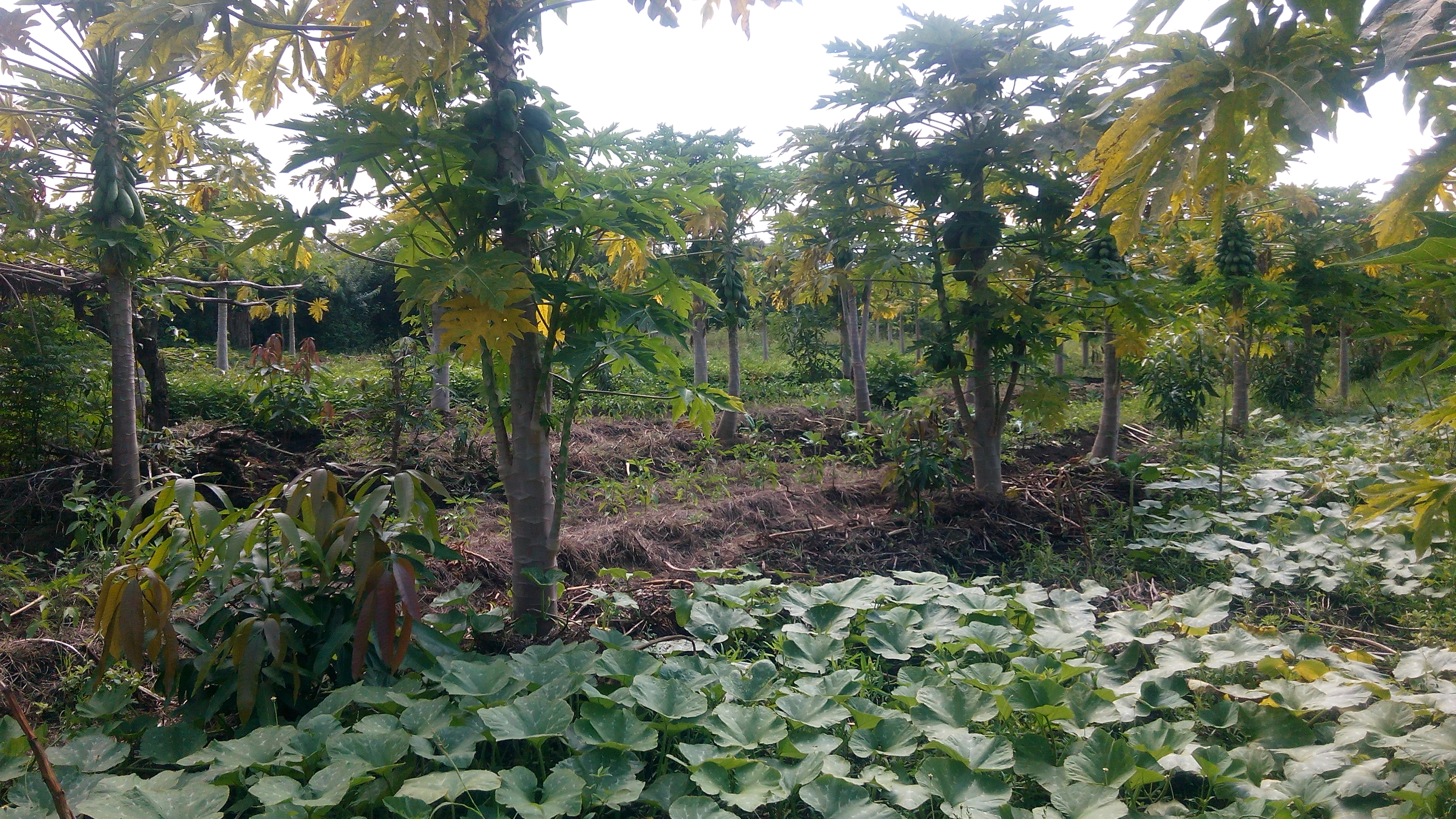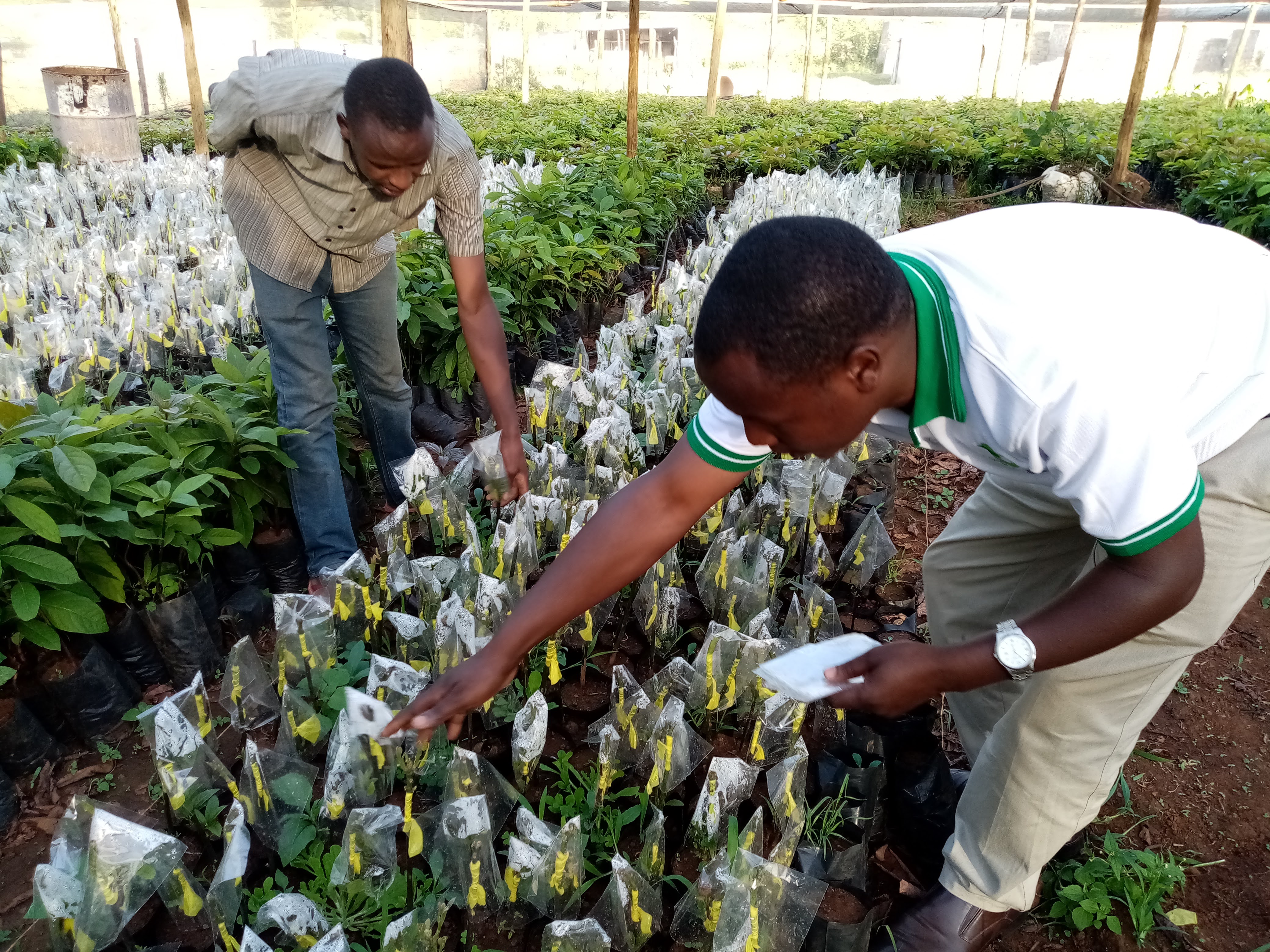By May Muthuri, Charles Odhiambo & Susan Chomba
Regreening Kenya embarks on an ambitious journey to bring more than 150,000 hectares of degraded land under restoration
The programme is in partnership with the World Agroforestry(link is external) (ICRAF) and World Vision Kenya(link is external). It identifies suitable restoration areas through assessments of the health of soils and vegetation as well as prioritisation with farmers, then identifies suitable restoration practices and appropriate tree species for various agro-ecological niches that suit farmers’ differing needs.
Three years and several months into the fourth year, multi-purpose and high-value trees and shrubs have been integrated into crop and pasture lands through agroforestry and farmer-managed natural regeneration (FMNR), translating to about 20,000 hectares under restoration in various counties by the end of 2020. Farmers invest time and resources in techniques that provide them with good returns on their investment.
To support farmers make the transition to agroforestry, the project uses community-centred approaches, including tree-based value chains (notably fruit and honey), that are integrated with soil and water conservation, reseeding with adaptable grass species and financial mechanisms targeting women and youth.
“Training in on-farm tree planting, covering different types of fruits suited to local climatic conditions, like mangoes, pawpaws and bananas and, most importantly, the short growth span, is what drew my attention and that of other farmers in the area,” noted Charles Odero, a leading farmer from Migori County. “Furthermore, the high yielding production with good returns made it easier to embrace the practices.”

Land restoration through soil and water conservation and fruit tree farming in Homa Bay County. Photo: World Vision Kenya
In return, changes in attitudes and behaviours of these beneficiaries transformed them into voices of reason in communities in their capacities as leading farmers and heads of farmers’ groups. Farmers share their knowledge through avenues like exchange visits, community forestry associations, school environmental clubs, churches, farmer/producer groups, youth soccer tournaments, and savings for transformation. Each gathering provides an opportunity for farmers to share knowledge about new varieties and techniques to address poor fertility and increase their household incomes.
“I am very grateful to the project for supporting us through theoretical and practical training,” said Elizabeth Wambui Ngigi, a farmers’ group member. “As members of Githima-Nyakiambi group, our target is to transform our immediate environment by planting indigenous trees which have been entrusted to us. We are also training more groups in our village, with a target of reaching out to at least two other groups each.”
So far, a wide variety of tree species have been planted — Acacia polyacantha, Croton megalocarpus, Azadirachta indica (neem), Markhamia lutea, Olea africana and Cordia africana — and high-value exotic tree species — like Grevillea robusta, Sesbania sesban, Calliandra calothyrsus, Casuarina equisetifolia, Leucaena leucocephala and Moringa oleifera — as well as fruit tree seedlings, such as mango and pawpaw.
Courtesy of the Regreening Africa App), the project is in the know about the hectares under restoration and households reached. This information informs increases in scale of restoration activities while also increasing adoption in Migori and Homa Bay counties. The app is coupled with other monitoring techniques, such as ground surveys and satellite imagery.

Robert Oroiyo taking Mr. Peter Olimo and young farmers on use of Regreening App in Nyatike, Migori County.
The project has also engaged government agencies and the larger private sector. By engaging with county and national governments and agencies — such as Kenya Forest Service and Kenya Forestry Research Institute — as well as community-based environmental conservation groups and community forest associations, the project widens its reach to many smallholders. The larger private sector is a key player in the restoration process, with companies involved including British American Tobacco, Habex Agro and PARECMA along with commercial banks and micro-finance institutions. The networking pool is helping to narrow financial gaps and paving way for wider adoption.

CS-Environment, Hon. Keriako Tobiko leads stakeholders in restoring Kaptagat Forest in Elgeyo Marakwet County. Photo: World Vision Kenya
The engagement with county governments has also seen an introduction of favourable policies and budgetary allocations for increased land restoration, especially in Homa Bay, Migori, Baringo, Elgeyo Marakwet and Nakuru counties. In Homa Bay, there has been formulation of a Sustainable Energy, Water and Climate Change Adaptation Policy and action plan; gazettement of a Participatory Forest Management Plan; establishment of a Renewable Energy Technical Working Group geared towards incorporating FMNR and energy-saving cookstoves as approaches to environmental and energy conservation.
Regreening Africa has heeded the Government of Kenya’s call to increase farmers’ access to high-quality germplasm through a strong partnership with the ICRAF tree-seed laboratory in Nairobi. ICRAF scientists have trained hundreds of leading farmers and farmers’ groups on how to collect high-quality seeds, coupled with building their capacity in establishment and management of tree nurseries and fruit-tree farming, including vegetative propagation.
Charity Self-Help Group in Laikipia County is one of the beneficiaries that has successfully raised and grafted over 3000 rootstocks of avocado seedlings. Another smallholders’ group, Nyakiambi-Munyaka, have raised 2000 rootstocks of Hass avocado seedlings. Regreening Africa in collaboration with Farming Systems Kenya is sourcing an additional 1000 Fuerte and 3000 Hass scions for both groups. Sale of the avocado seedlings will earn the group between USD 3000 and 4500 over the next 12 months.
Another beneficiary of these efforts is a unique group called Cheptengis Okilgei. With a prior thirst for an illicit brew, this group of 17 members, having undergone rehabilitation, are now passionate about the environment in Elgeyo-Marakwet County. Thanks to the Kenya Forest Service, who allocated 3 acres to support the establishment of tree nurseries, training in which was provided by Regreening Kenya. Training in vegetative propagation techniques, such as grafting and marcotting, are paying off as members have so far sold 60,000 assorted seedlings. Also, 2000 Hass avocado seedlings have recently been grafted and will be sold by the group.
So what lies in store for Regreening Kenya in 2021?
All being equal, Regreening Kenya aims at surpassing the 150,000 hectare target. Using the community forest association scaling model and building on established partnerships, Regreening Kenya will work to restore 5800 hectares of degraded land in Eastern Maul Block in Nakuru County; about 5000 hectares of Kinna Community Forest in Isiolo County; 10,000 hectares of Marsabit Forest in Marsabit County; 15,000 hectares of Kirisia Forest in Samburu County; 25,000 hectares of Marmanet Forest in Laikipia County; 200,000 hectares of fragile hill tops in Elgeyo Marakwet County; 700 hectares of forest in Baringo County; 9500 hectares in Homa Bay County; and 10,500 hectares in Migori County by the end of 2022. Additionally, teaming up with the Kenya Forest Research Institute, 500,000,000 tree seedlings will be planted by the end of 2021.

Habex Agronomist inspecting newly grafted avocado seedlings, Eldoret Kenya
To catalyse land restoration beyond the targeted counties, Regreening Africa has joined a consortium of civil society organizations known as Trees Kenya, where it will complement other land-restoration efforts, such as forest farming, soil and water conservation, dryland agriculture and other climate-smart technologies, to increase the scale of adoption of FMNR in Turkana, Machakos, Makueni, West Pokot, Trans Nzoia, Tharaka Nithi, Embu, Meru, Nyeri, Kiambu and Murang’a, among others.
In an effort to catalyse a national restoration movement and keep the wide network of restoration actors connected, Regreening Kenya is working with Government agencies — such as Kenya Forest Service and Kenya Forestry Research Institute — local and international NGOs — including World Resources Institute, Food and Agriculture Organization of the United Nations, youth and women’s groups and others — to convene a National Land Restoration conference in June 2021. Thematic webinars have been ongoing since late 2020 as a warmup to the main conference. There is no question the Regreening team is punching above its weight to realize the ambition of a greener, resilient and prosperous Kenya!
About Regreening Africa
Regreening Africa is an ambitious five-year project funded by the European Union that seeks to reverse land degradation among 500,000 households, and across 1 million hectares in eight countries in Sub-Saharan Africa. By incorporating trees into croplands, communal lands and pastoral areas, regreening efforts make it possible to reclaim Africa’s degraded landscapes.
This story was produced with the financial support of the European Union. Its contents are the sole responsibility of Regreening Africa and do not necessarily reflect the views of the European Union.

